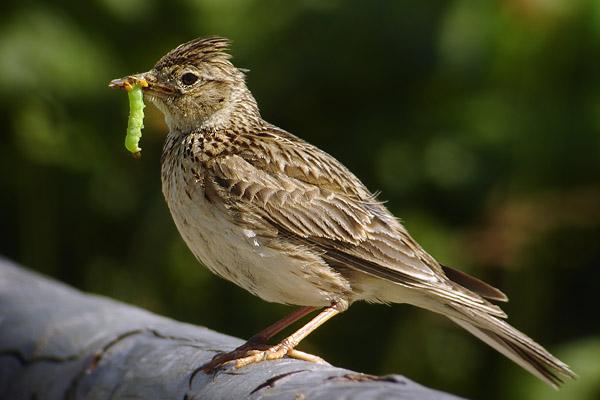Taxonomy:
Kingdom (regnum): Animals (Animalia)
Phylum (phylum): Chordates (Vertebrata)
Class (classis): Birds (Aves)
Order (ordo): Perching Birds (Passeriformes)
Family (familia): Larks (Alaudidae)
Genus (genus): Alauda
Species (species): arvensis
Distribution and Habitat:
The skylark's breeding range covers all of Europe and the temperate zone of Asia as far east as Japan and the Kamchatka peninsular. This bird has also been introduced in Hawaii, western North America, eastern Australia and New Zealand. In Hungary there are 300.000-800.000 pairs of Alauda arvensis.
Physical description:
The Skylark is 18 centimetres long. The length of the wing is 10 centimeters and the tail is 7 centimeters long. The sexes are alike and the birds are streaky brown on the back and buff-white below with dark-brown streaking on the upper breast. The tail is brown with outer-tail feathers of white. There is a small up-turned crest on the back of the head, visible only when raised. The female is smaller than the male.
Behavior:
This is a profitable bird. Its food is seed and insect. Migratory towards the north and east of its range where birds head, during winter, to join the resident populations of the west.
Biology:
Skylark is maturity at the age of one. The skylark nests between April and August, and successful pairs may raise up to four broods in one breeding season. Three to five eggs are laid, incubated by the female for 12-13 days. The nest is always on the ground, and is usually very well concealed within vegetation. The young birds leave the nest when 9-10 days old, but remain dependant on their parents for a further one to two weeks.
http://en.wikipedia.org/wiki/Skylark
http://www.food4wildbirds.co.uk/skylark.htm
http://www.arkive.org/skylark/alauda-arvensis/#text=Biology
